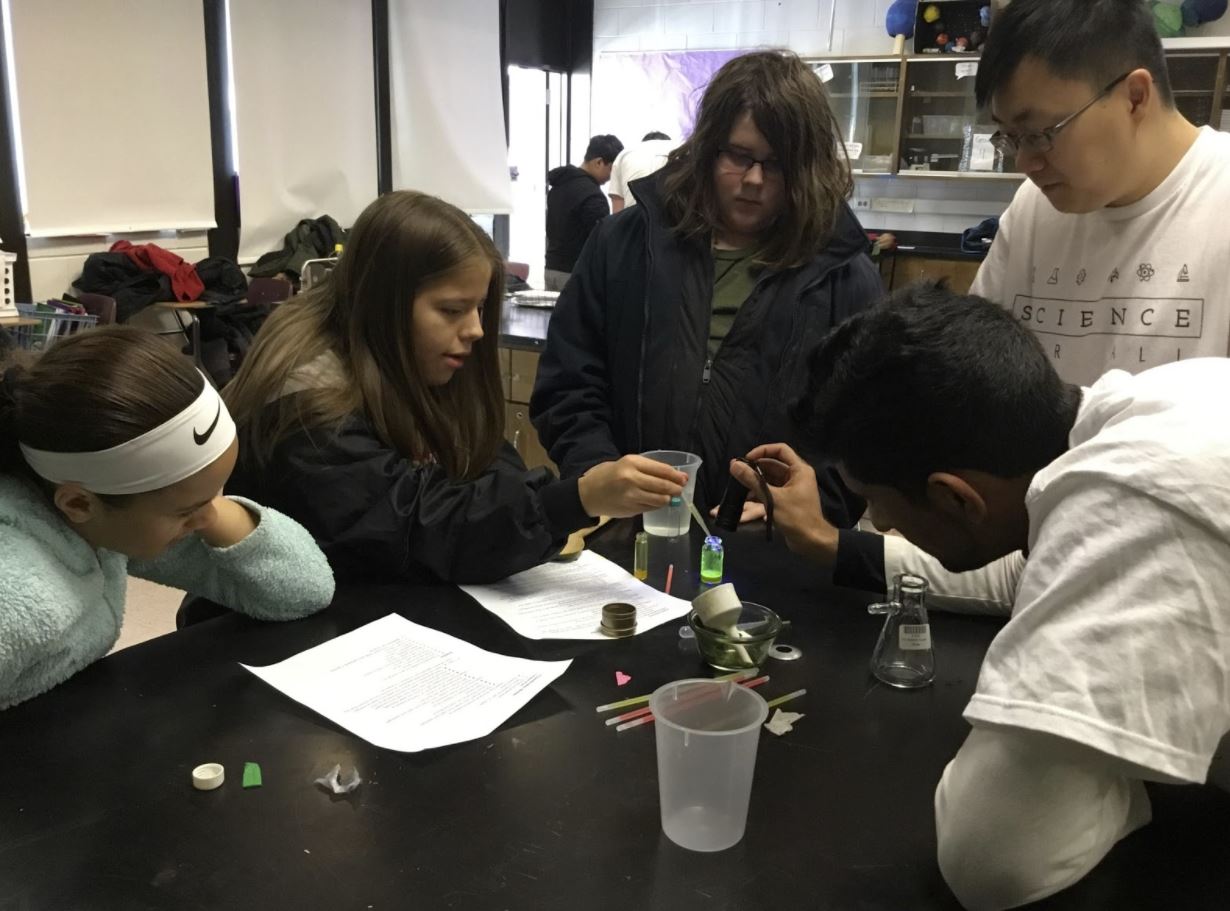12.04.2019
Experiment Leaders: Nolan Concannon and Andrew Johannesen
As we approach the shortest days of the year, we find ourselves relying less on the sun’s warm,
natural light in favor of light from artificial sources. We may take for granted that we can make
light on demand even into the darkest hours of the night, but how do these luminaries produce
their light?
Light is a form of energy that is generated in one of two ways. The first is by incandescence,
where light is generated from hot objects like our sun. The second is by luminescence, where
light comes from objects that are not necessarily hot. Sometimes called “cold light”,
luminescence can be observed in fireflies, glowsticks, and glow-in-the-dark stickers. In our
December experiment with the students of Murray Middle School, we set out to explore a few
of these cool forms of light.
First, we focused on photoluminescence, in which invisible light can be converted to light we
can see. In this experiment, we took a couple of common kitchen ingredients and watched
them light up when we put them in the right environment. We first studied chlorophyll; the
green molecule responsible for plants’ ability to harvest energy from the sun. The students
extracted this molecule from spinach by grinding and filtering a few leaves in isopropyl alcohol
(rubbing alcohol). When we shined a black light on our mixture, we saw it glow a deep red.
Quite a difference from the green we see in ordinary room lighting! The students also mixed
the spice turmeric into the same alcohol and saw it light up green rather than turmeric’s typical
yellow-orange. In both experiments, we noticed that adding water to our mixtures completely
eliminated the luminescence. This demonstrated that the liquid environment is very important
for allowing these materials to convert invisible light into light we can see.
Next, we looked at chemiluminescence, in which reacting chemicals produce light. We looked
at the effect of temperature on the brightness of glow-sticks. First, we shined our black lights
on unbroken glow-sticks and noticed that these contain some photoluminescent parts as they
became very brightly colored. Next, we activated the glow sticks and observed that they again
became very bright, now because of the mixing of materials within the sticks. The students
heated and cooled the sticks using hot and cold water and noted that the hotter they were, the
brighter they were. What the students saw was the effect of temperature on the light-
producing a chemical reaction. Often heat can speed up a chemical reaction, and here we were
seeing the reaction’s product that we can see—bright light—being produced more quickly.
There are several other forms of luminescence that we encounter in our everyday lives. LEDs
use electroluminescence, the generation of light from electricity, in our phone screens and are
increasingly common in our homes as lightbulbs. Since they do not need to also produce heat,
LEDs are more efficient than older incandescent lightbulbs. This improvement is through the
power of luminescence, like the kinds we saw in our experiments today.
